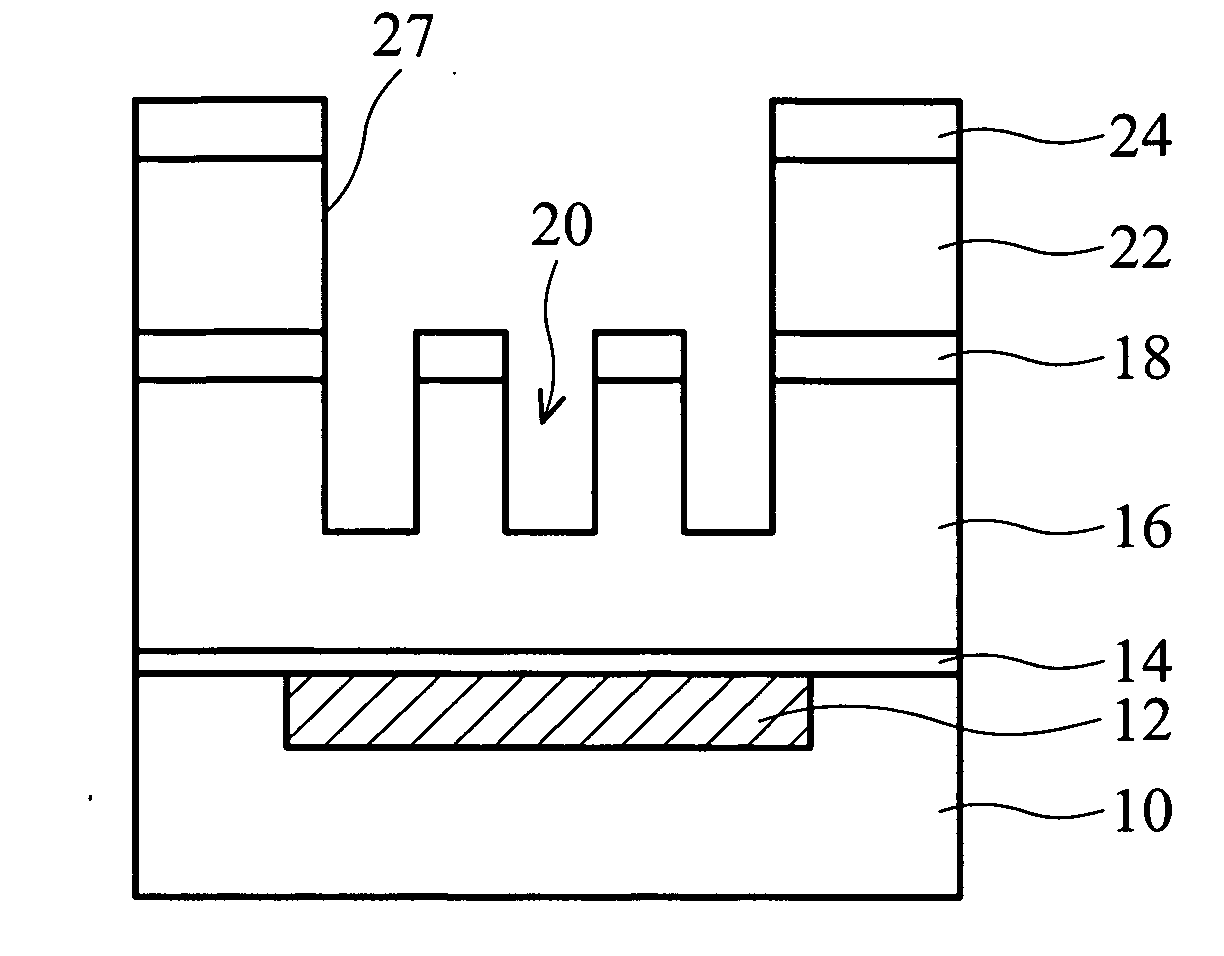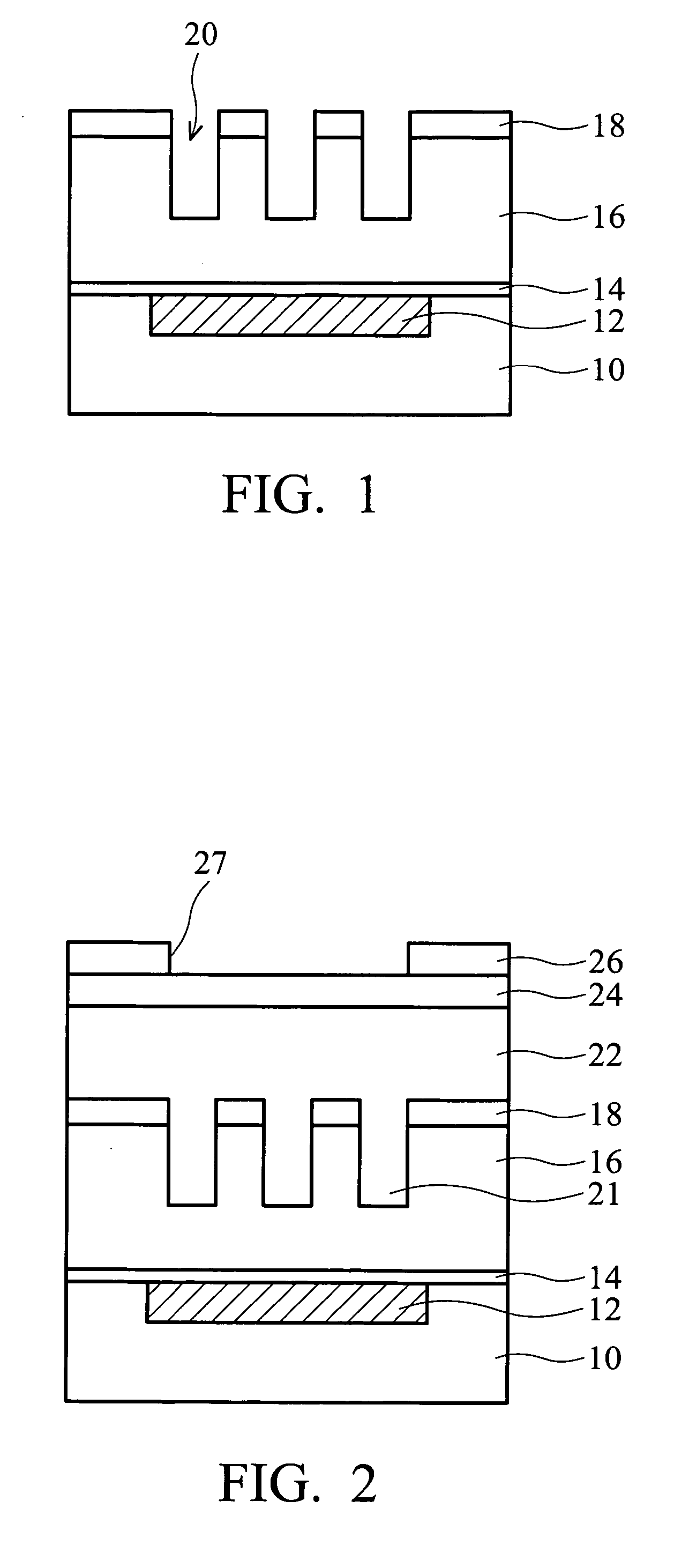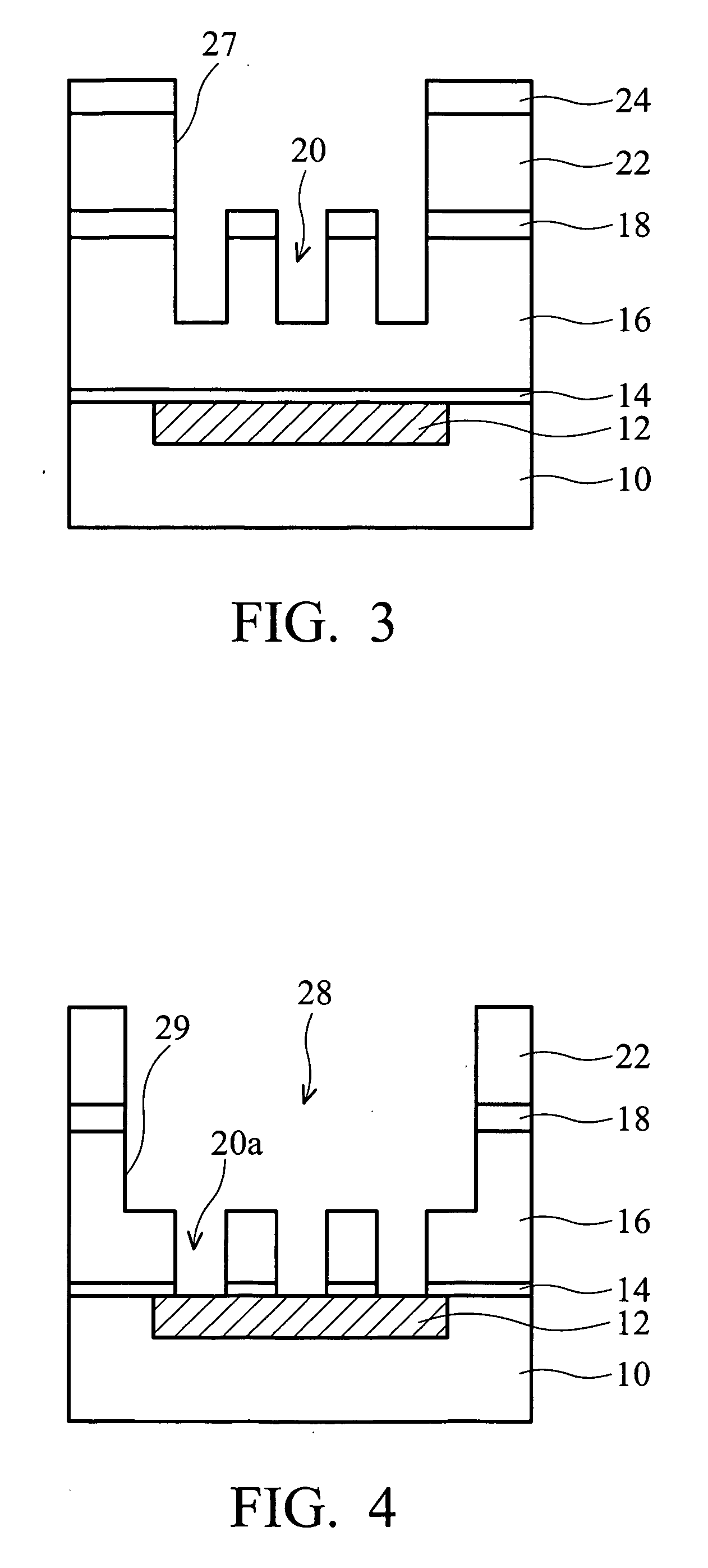Partial-via-first dual-damascene process with tri-layer resist approach
a dual-damascene and resist technology, applied in the direction of basic electric elements, semiconductor/solid-state device manufacturing, electric apparatus, etc., can solve the problems of photoresist poisoning, difficult to adequately control the etch process, etc., to avoid ashing damage, improve critical-dimension control, and avoid the effect of ashing damag
- Summary
- Abstract
- Description
- Claims
- Application Information
AI Technical Summary
Benefits of technology
Problems solved by technology
Method used
Image
Examples
Embodiment Construction
[0010] Embodiments of the present invention provide a novel dual-damascene process, which overcomes the aforementioned problems of the prior art through the use of a tri-layer resist process and a metal hard mask process. Particularly, a partial-via-first dual-damascene method with a tri-layer resist process is employed to improve critical-dimension (CD) control for via holes and trenches, avoid ashing damage, and provide a wide wet strip window in patterning via holes without extra process flow and production costs. Compared with the conventional full-via-first method, the term “partial-via-first” as used throughout this disclosure refers to a dual-damascene method in which an initial via hole is patterned first through partial thickness of a dielectric layer by reducing the depth of the initial via etch, and then a real via hole is patterned in the lower portion of the dielectric layer and a trench is patterned in the upper portion of the dielectric layer.
[0011] Reference will no...
PUM
 Login to View More
Login to View More Abstract
Description
Claims
Application Information
 Login to View More
Login to View More - R&D
- Intellectual Property
- Life Sciences
- Materials
- Tech Scout
- Unparalleled Data Quality
- Higher Quality Content
- 60% Fewer Hallucinations
Browse by: Latest US Patents, China's latest patents, Technical Efficacy Thesaurus, Application Domain, Technology Topic, Popular Technical Reports.
© 2025 PatSnap. All rights reserved.Legal|Privacy policy|Modern Slavery Act Transparency Statement|Sitemap|About US| Contact US: help@patsnap.com



